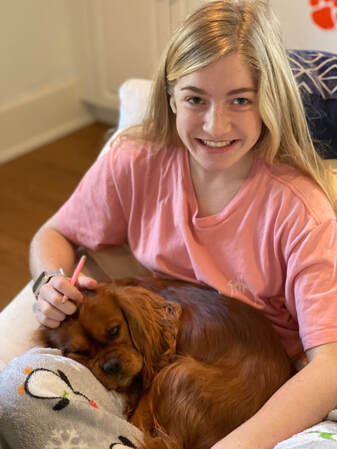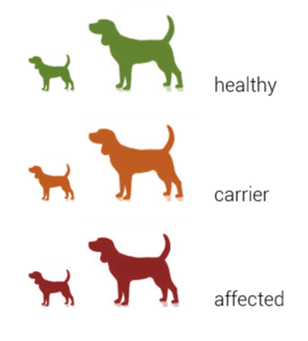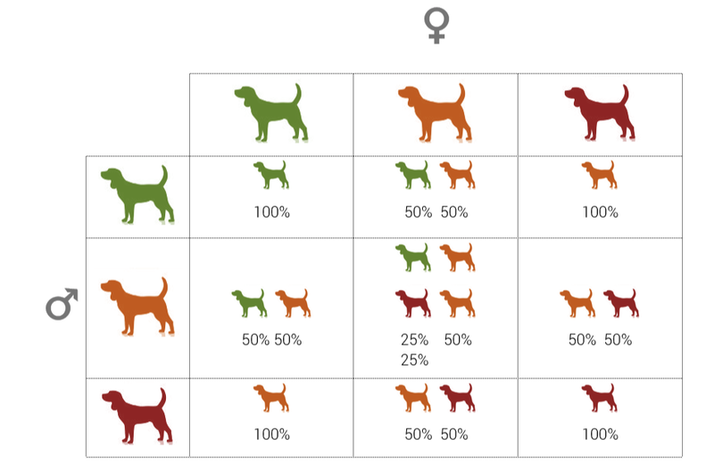 "Red Teddy" w/ his Guardian Family "Red Teddy" w/ his Guardian Family Most people don't feel comfortable buying a dog from a puppy mill or puppy store because of the parents' horrendous living conditions, forced breeding practices, and the fact that the puppy is not properly socialized before being purchased. The thought of breeders leaving theirs dogs in huge kennels has also lost its appeal to the majority of consumers. So, how do reputable breeders provide their breeding dogs with the best possible lives, while also maintaining diversity and high standards for their breeding programs? One solution is the use of Guardian Homes. This post will explain more about what it means to be a Guardian Home and contains a link to apply to participate in our program. How do Guardian Homes work? A male or female dog that will be used for breeding is simply placed in a home owned by someone other than the breeder. This aids the breeder in achieving numerous objectives:
What's in it for the Guardian Home? Guardian Families get a pick of the litter puppy without paying a dime. These programs frequently give retirees, those who can't afford the purebred pet of their dreams, or families who simply like puppies and are interested in breeding the opportunity to enjoy the benefits of breeding without the expenses, risks, and inconveniences associated with owning a kennel. To be a Guardian Home, there are certain standards that most reputable breeders will expect you to meet, such as:
We hope this blog post has provided more information about the use of Guardian Homes in breeding programs. If you live in the Charleston area and would like to be considered for our program, please fill out the online application here or send any questions you may have to [email protected].
3 Comments
 This post will discuss the importance of buying a puppy from a breeder who examines the DNA of their breeding stock and what to check for when given a copy of a DNA panel. We will discuss in a future post why you might think about DNA testing your own dog, particularly if you adopted, bought from a pet store, or acquired a puppy without checking the breeder's credentials. Many health issues that might affect Cavalier King Charles Spaniels can be financially and emotionally draining for their owners. The ability to detect dogs who were at risk of passing on major genetic problems wasn't available years ago, but that problem has been solved thanks to comprehensive DNA testing for dogs. In today's market, any trustworthy breeder should be able to talk to you about the role DNA plays in their breeding program, provide you with the results of any testing they've done and understand the potential impacts of DNA on your particular dog. This post will go over the fundamentals of determining whether a dog is genetically clear (healthy), a carrier (healthy but able to spread the disease to puppies) or impacted (unhealthy and will pass on the disease) before talking about specific genetic diseases that plague this breed. CLEAR - This is the benchmark: CLEAR. This canine is free of any genetic defects. As a result, they are not vulnerable to any diseases checked by the panel and do not possess any genetic defects that could be passed on to their offspring. Please note that a DNA clear dog is not clear of ALL defects, just those we can detect through genetic testing. Some issues in this breed, such as MVD (mitro valve disease) are not detectable by DNA panel. CARRIER - A dog containing one (1) gene for a genetic abnormality is called a "carrier." They can transmit the gene to their puppies, but the puppy won't exhibit the disease as they don't carry the two genes necessary to make them at risk. Thus, the gene won't affect them (they will never get the defect). There is a misconception among some consumers that carriers shouldn't be bred. Breeding carriers is safe, but they should only be bred with a dog that has tested negative for that condition so that none of the puppies are at risk. If we eliminated all carriers from our gene pool, we would cause more problems from inbreeding than we are solving by not producing gene carriers. AFFECTED - A dog who is impacted (or at risk) is one that contains two copies of the gene for a trait, making them susceptible to the disease. This dog can still be breed but only with a clear dog. However, it's not ideal, as all of their offspring will be carriers. Due to the likelihood that the dog would develop symptoms of the genetic disorder, you should avoid buying a dog that is affected by it. The diagram below helps put this information in context. Green is great. Orange is good. Red is a concern.  Knowing the differences between the clear, carrier, and impact can help you determine which genetic testing is crucial for this breed. A trustworthy breeder should test, at the very least, for the following things: CAVALIER KING CHARLES SPANIEL -
We get many questions about IVDD from our puppy purchasers as it relates to the Cavalier. We do not list that above because greater than 90% of all Cavaliers have IVDD. If you are interested in learning more about IVDD, please search "IVDD" on our blog to learn more. A trustworthy breeder cannot be created by DNA testing alone. Further breed-specific heart, eye, hip, & related testing must also be conducted and offered. Please go to our blogs on the OFA as part of your puppy search for more details on those tests. If you want to know more about DNA testing your dog before breeding or identifying any potential health issues, we highly suggest Embark because they handle all of our DNA testings and are a paid advertiser for our instructional content. Please read this post, which offers Embark savings and a sample Embark report. |
FTC DISCLOSUREThis blog contains affiliate links. I may earn commissions from qualifying purchases made from links on this blog. We do not recommend any products that we do not purchase and use for our dogs. Categories
All
Archives
June 2024
|
 RSS Feed
RSS Feed